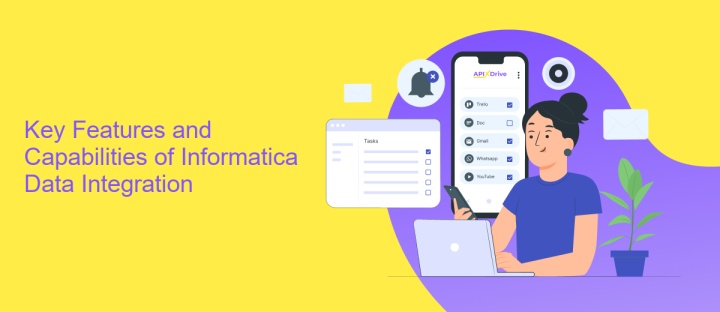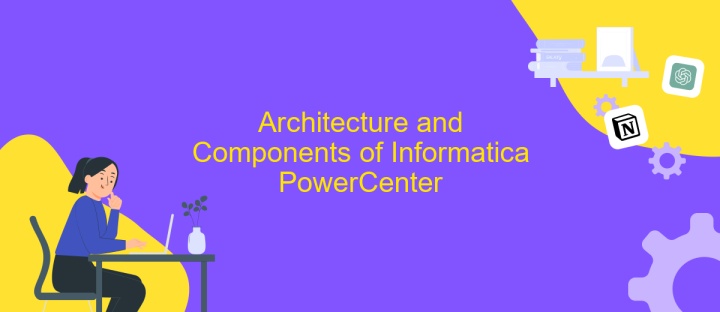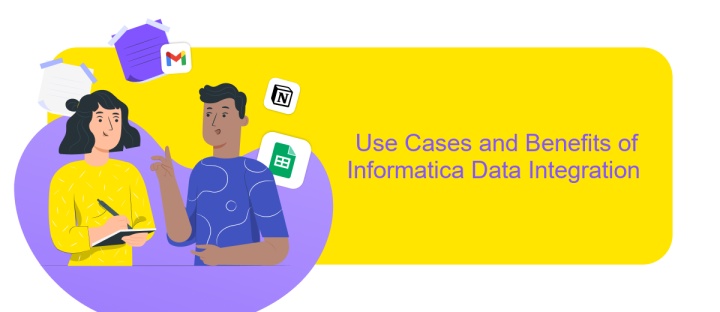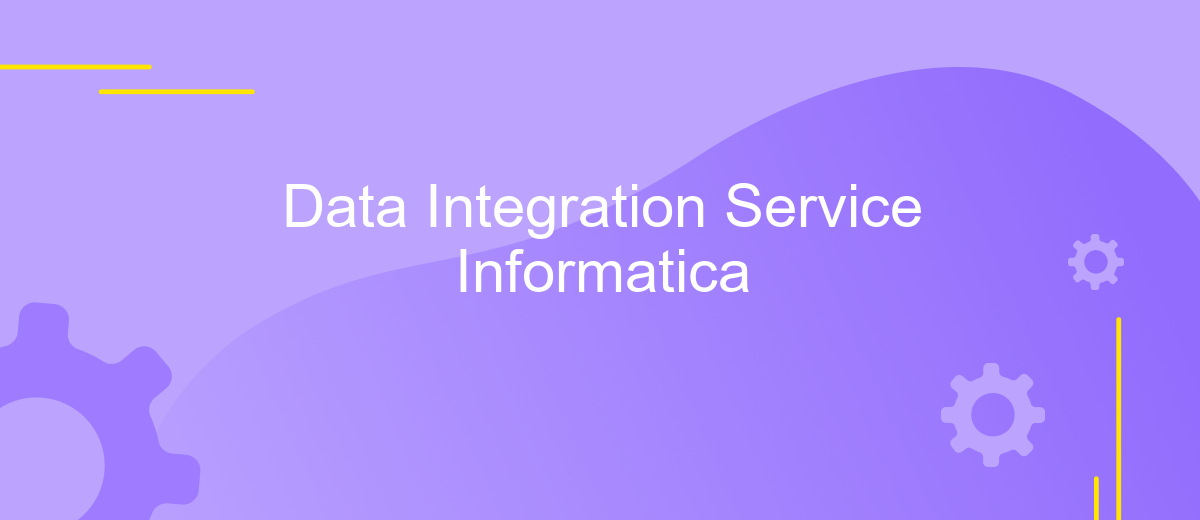Data Integration Service Informatica
Data Integration Service Informatica is a robust platform designed to streamline and simplify the process of integrating disparate data sources across an organization. By ensuring seamless data flow and accessibility, it empowers businesses to make informed decisions with real-time insights. This service supports various data formats and systems, enhancing data consistency and reliability while reducing the complexity and cost associated with traditional data integration methods.
Introduction to Informatica PowerCenter Data Integration Service
Informatica PowerCenter is a leading data integration tool widely used for building enterprise data warehouses. It is designed to handle complex data integration challenges by automating the process of data extraction, transformation, and loading (ETL). PowerCenter's robust architecture enables seamless data integration across various systems, ensuring data consistency and accuracy.
- Scalable architecture for handling large volumes of data.
- Comprehensive support for various data sources including databases, cloud services, and flat files.
- Advanced data transformation capabilities to meet diverse business requirements.
- User-friendly interface with drag-and-drop functionality for easy mapping design.
- Strong metadata management for effective data governance.
The Informatica PowerCenter Data Integration Service is integral to achieving a unified view of data across the organization. It allows businesses to streamline operations by providing timely and accurate data insights. With its flexible and scalable solutions, organizations can adapt to evolving data needs, ensuring they remain competitive in a data-driven landscape. By leveraging PowerCenter, companies can enhance decision-making processes and drive innovation.
Key Features and Capabilities of Informatica Data Integration

Informatica Data Integration offers a robust set of features designed to streamline and enhance data management processes. Its intuitive interface allows users to design and implement complex data integration workflows with ease. The platform supports a wide variety of data sources, enabling seamless data movement and transformation across cloud, on-premises, and hybrid environments. Informatica's advanced data transformation capabilities ensure high-quality data by cleansing, enriching, and standardizing data sets. Additionally, the platform's scalable architecture accommodates growing data volumes, making it suitable for organizations of all sizes.
Furthermore, Informatica provides real-time data integration, enabling businesses to make timely, data-driven decisions. The platform's comprehensive metadata management ensures that data lineage and governance are maintained throughout the integration process. For those looking to automate data workflows, services like ApiX-Drive can be integrated with Informatica to facilitate the automation of data transfers and transformations, reducing manual effort and minimizing errors. With its robust security features, Informatica ensures that sensitive data is protected, maintaining compliance with industry standards and regulations.
Architecture and Components of Informatica PowerCenter

Informatica PowerCenter is a robust data integration tool that provides a comprehensive architecture for managing data operations. It is designed to handle complex data transformations and integrations across various platforms. The architecture consists of several key components that work together to ensure efficient data processing and management.
- Repository Service: This component manages the metadata and stores the data integration logic created by developers. It is crucial for version control and collaboration.
- Integration Service: Responsible for executing the data transformation and data movement tasks. It processes the workflows and sessions created in PowerCenter.
- Domain: The primary unit that contains all the services and nodes. It acts as a centralized administration point for managing and monitoring the environment.
- Client Tools: These include tools like Designer, Workflow Manager, and Workflow Monitor, which are used for designing data mappings, managing workflows, and monitoring processes.
Each component of Informatica PowerCenter plays a vital role in ensuring seamless data integration. The architecture is scalable and flexible, allowing organizations to adapt to varying data needs and complexities, making it an ideal choice for enterprise-level data management solutions.
Use Cases and Benefits of Informatica Data Integration

Informatica Data Integration is a powerful tool that enables organizations to consolidate data from various sources into a unified view. This integration facilitates seamless data flow, enhancing decision-making and operational efficiency. By leveraging Informatica, enterprises can ensure data consistency and accessibility across all departments.
One of the primary use cases of Informatica Data Integration is in the realm of business intelligence. It allows companies to integrate disparate data sources, providing a comprehensive analytical platform. This capability is crucial for organizations aiming to derive actionable insights from their data, thereby fostering data-driven strategies.
- Streamlining data migration processes during mergers and acquisitions.
- Enhancing customer experience by integrating customer data from multiple touchpoints.
- Facilitating compliance with regulatory requirements through accurate data consolidation.
- Enabling real-time analytics by integrating live data streams.
Overall, Informatica Data Integration offers significant benefits, including improved data quality, reduced operational costs, and enhanced agility. By automating data workflows, it minimizes manual intervention, thus reducing errors and accelerating time-to-value. This makes Informatica an indispensable tool for organizations seeking to harness the full potential of their data assets.
Best Practices and Considerations for Informatica Implementations
When implementing Informatica for data integration, it is essential to focus on designing a robust architecture that supports scalability and performance. Begin by thoroughly analyzing data sources and requirements to ensure seamless integration. Prioritize data quality by implementing validation and cleansing processes to maintain accuracy and consistency. It is also crucial to establish effective monitoring and error-handling mechanisms to identify and resolve issues promptly, minimizing disruptions in data flow.
Consider leveraging tools like ApiX-Drive to streamline integration processes. ApiX-Drive offers user-friendly interfaces and automation capabilities, reducing manual effort and potential errors. Additionally, ensure regular updates and maintenance of Informatica environments to incorporate new features and security patches. Collaborate with stakeholders to align data integration strategies with business objectives, ensuring the solution delivers maximum value. Finally, invest in training and documentation to empower teams with the knowledge and skills necessary for efficient Informatica operations.
FAQ
What is Informatica Data Integration Service?
How can I improve the performance of my data integration processes in Informatica?
What are the key features of Informatica Data Integration Service?
How does Informatica handle data security during integration?
Can Informatica Data Integration Service be automated?
Apix-Drive is a simple and efficient system connector that will help you automate routine tasks and optimize business processes. You can save time and money, direct these resources to more important purposes. Test ApiX-Drive and make sure that this tool will relieve your employees and after 5 minutes of settings your business will start working faster.

